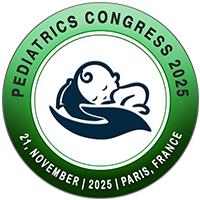
Ramgopal Sharma
All India Institute Of Medical Science, IndiaPresentation Title:
Trailblazing exploration: Unraveling phlebitis and its enigmas in children
Abstract
Aim:- The present study was aimed to assess the incidence of phlebitis and identify the factors that cause phlebitis in children with a peripheral intravenous cannula.
Materials and methods: A prospective observational study was conducted between 15 July 2022 to 30 November 2022 in pediatrics wards of a tertiary care hospital. 225 children with PIVC were included in the study. PIVC was observed till phlebitis developed or maximum for seven consecutive days after enrollment. Phlebitis was defined by using the Jackson VIP scale
Result: The incidence of phlebitis was 54.22% at 95% confidence interval. There was a significant association between phlebitis and the use of crystalloids, frequency of PIVC handling per day, use of cancer drugs, and use of a three-way, method of drug administration. The mean life span of PIVC was 69.86 ±32.88 hours, and the range was 19-180 hours.
Conclusion: The incidence of phlebitis is much higher than the acceptable limit as per Infusion Therapy Standards of Practice which should be reduced. Crystalloids, the Method of drug administration, and cancer drugs are the risk factor for phlebitis. The study suggests that most likely phlebitis occurs after three days.
Implication for clinical practice
Incidence of phlebitis is more than 50 % which are great matter of concern for the patient as well as for health care worker. Phlebitis may lead to a serious complication which can cause permanent or temporary disability or even death of patient
Keywords: Incidence, Peripheral Intravenous Cannula (PIVC), Phlebitis, Predisposing factors
Biography
TBU...

